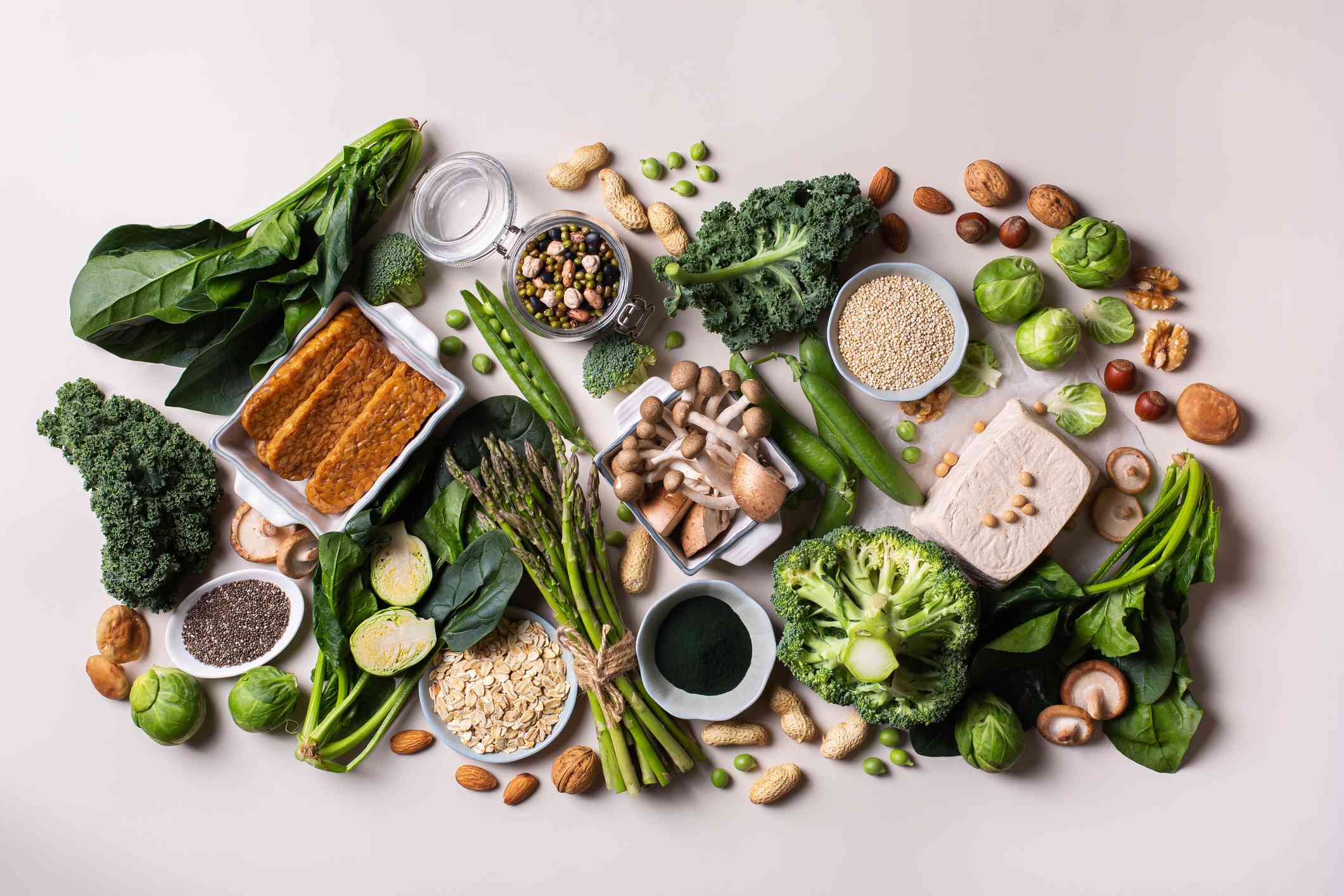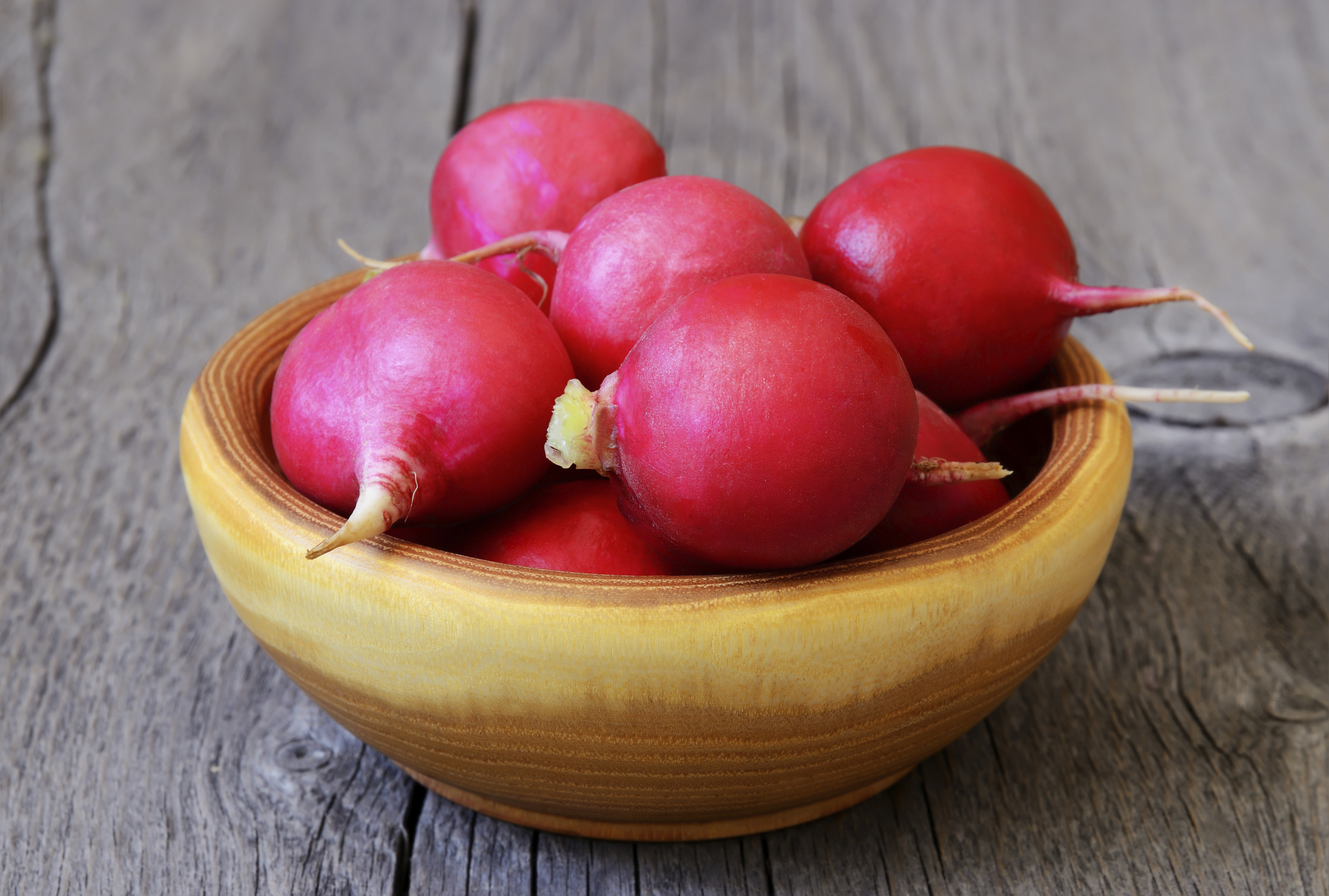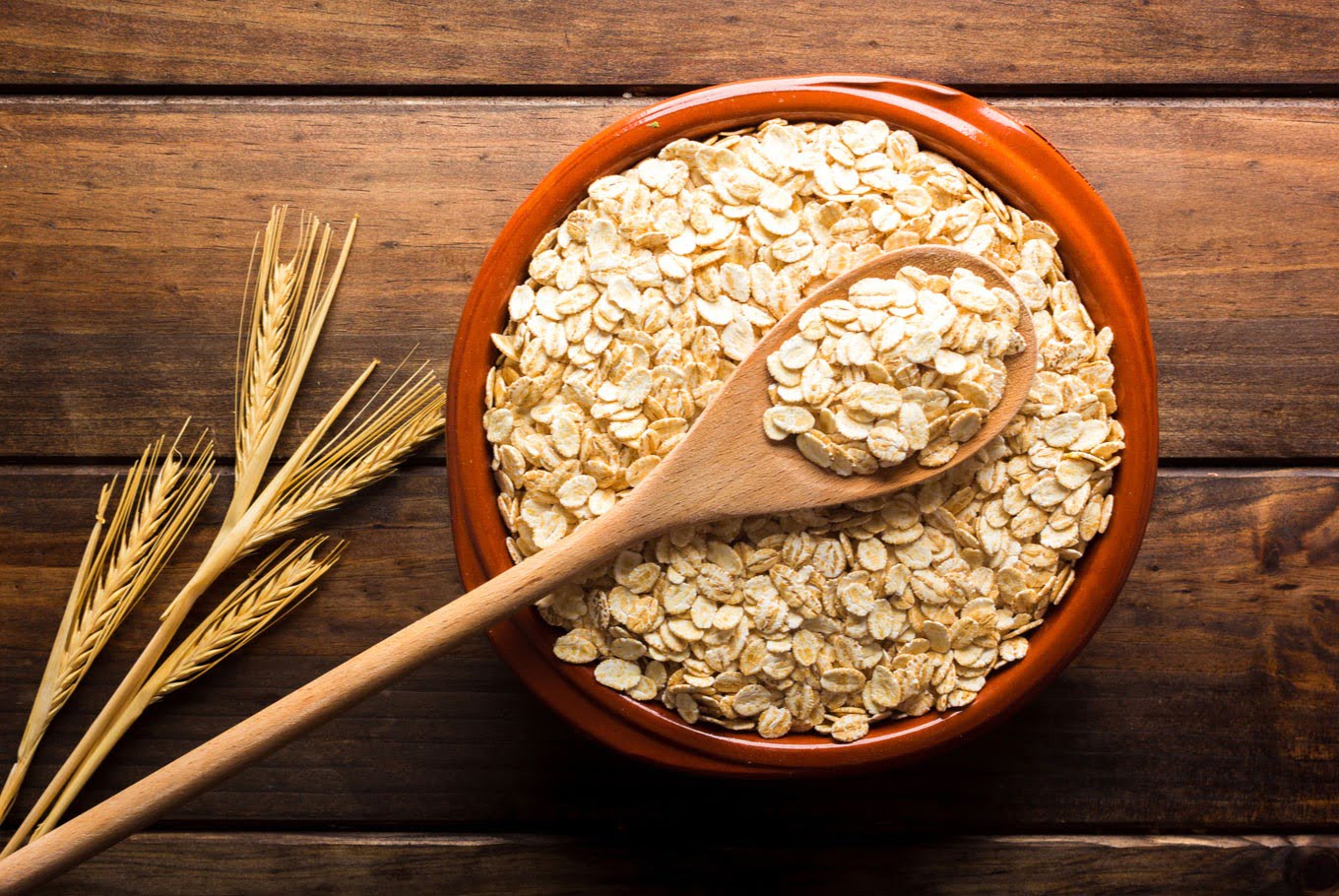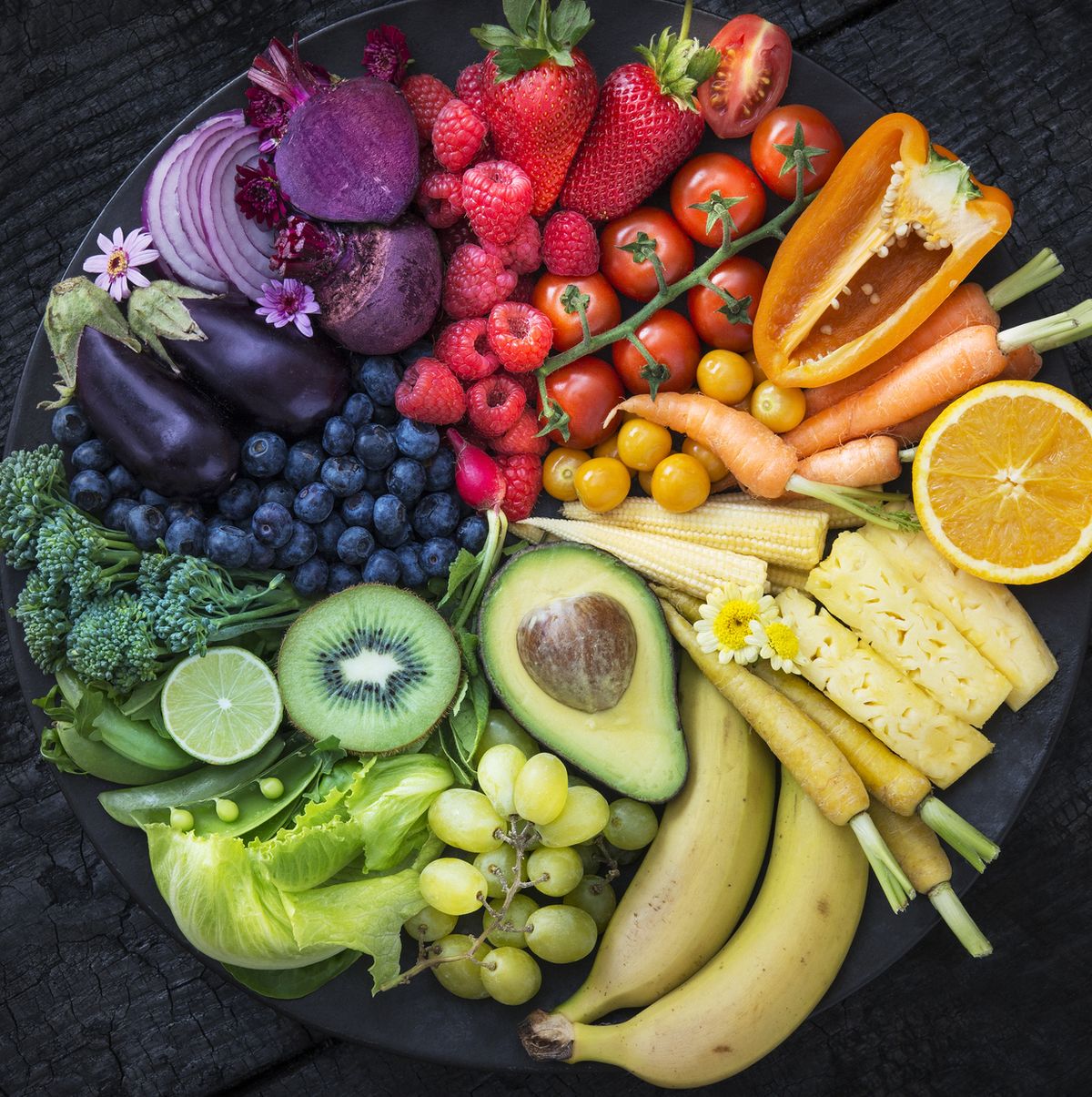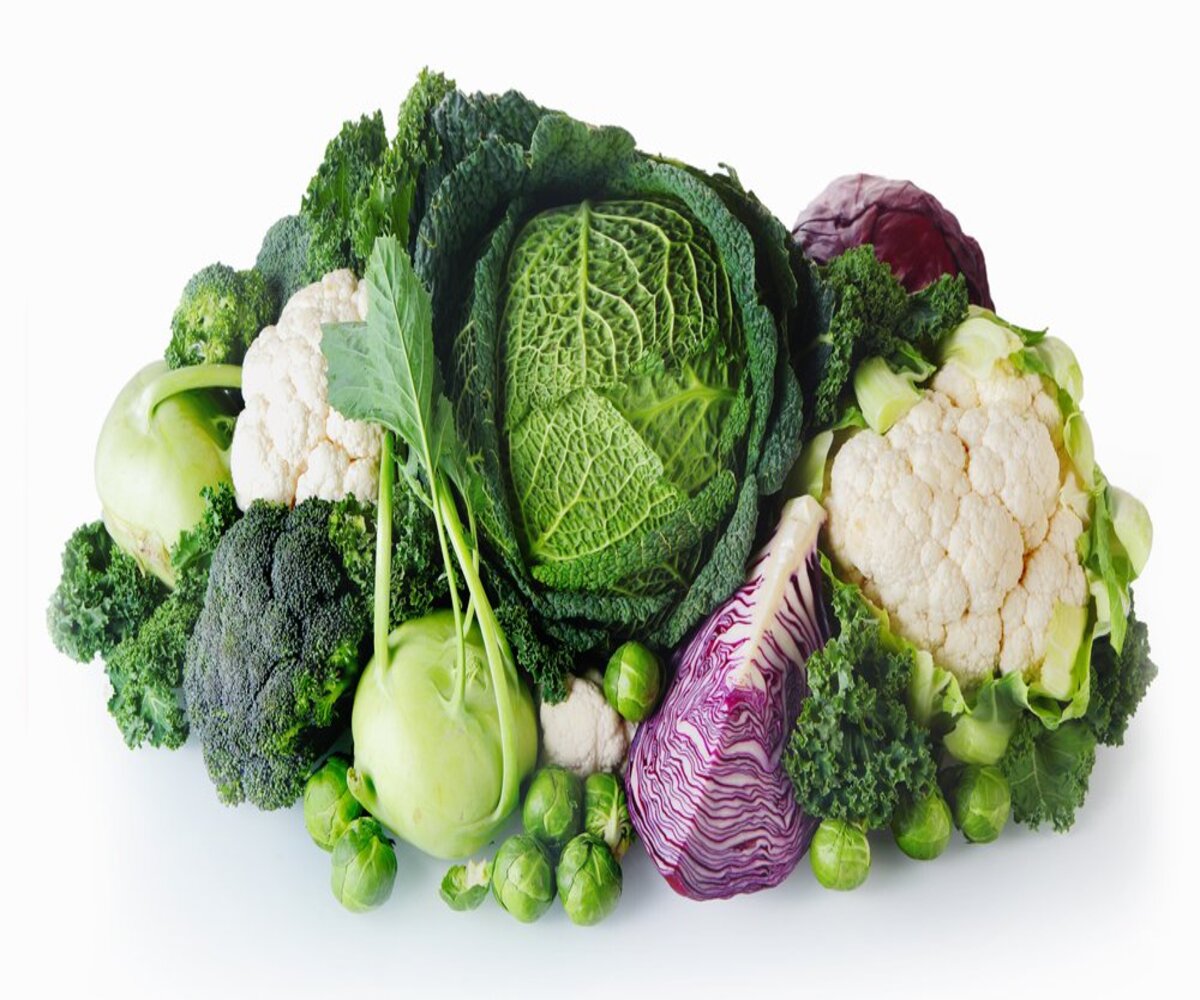Home>Gardening News and Trends>Latest News>How Many Calories Does Vegetables Have


Latest News
How Many Calories Does Vegetables Have
Modified: January 22, 2024
Discover the latest news on how many calories vegetables have. Find out the calorie content of your favorite veggies and make informed dietary choices.
(Many of the links in this article redirect to a specific reviewed product. Your purchase of these products through affiliate links helps to generate commission for Chicagolandgardening.com, at no extra cost. Learn more)
Table of Contents
- Introduction
- Understanding Calories
- Calories in Root Vegetables
- Calories in Leafy Greens
- Calories in Cruciferous Vegetables
- Calories in Allium Vegetables
- Calories in Nightshade Vegetables
- Calories in Squash and Gourd Vegetables
- Calories in Legumes
- Calories in Starchy Vegetables
- Calories in Other Common Vegetables
- Tips for Managing Calorie Intake from Vegetables
- Conclusion
Introduction
Welcome to our comprehensive guide on how many calories vegetables have. If you’re looking to maintain a healthy lifestyle or shed a few pounds, understanding the caloric content of different vegetables can be incredibly helpful. Vegetables are not only rich in essential nutrients, but they can also be surprisingly low in calories, making them a perfect addition to any diet plan.
Counting calories is a common practice for individuals looking to manage their weight or improve their overall health. While it’s true that caloric intake plays a significant role in weight management, not all calories are created equal. Vegetables, unlike processed foods and sugary beverages, are nutrient-dense and provide numerous health benefits.
By incorporating a variety of vegetables into your diet, you can reap the rewards of their vitamins, minerals, fiber, and antioxidants. Additionally, their low-calorie content allows you to consume larger portions without worrying about excessive caloric intake.
In this guide, we will explore the caloric content of various types of vegetables, ranging from root vegetables to leafy greens, cruciferous vegetables, allium vegetables, nightshade vegetables, squash, gourd vegetables, legumes, starchy vegetables, and other common options. Additionally, we will provide helpful tips for managing your caloric intake from vegetables.
So, whether you’re a health-conscious individual or simply curious about the caloric content of different vegetables, let’s dive into the world of calories in vegetables and discover how they can support your journey to a healthier lifestyle.
Understanding Calories
Before we delve into the specific caloric content of vegetables, let’s first understand what calories are and how they relate to our overall health and well-being. Simply put, calories are a unit of energy. When we consume food, our bodies use the calories from that food to perform essential functions such as breathing, circulating blood, and repairing cells.
Calories are obtained from the macronutrients present in our diet: carbohydrates, proteins, and fats. Carbohydrates and proteins contain approximately 4 calories per gram, while fat contains 9 calories per gram. It’s important to note that vitamins, minerals, and fiber do not provide calories as they are not considered macronutrients.
While it’s necessary to consume a sufficient amount of calories to fuel our bodies, excessive calorie intake can lead to weight gain and various health issues. On the other hand, consuming too few calories can result in malnutrition and a lack of energy. Striking the right balance is crucial.
The caloric value of vegetables varies depending on factors such as water content, fiber content, and the presence of natural sugars. Generally, most vegetables are low in calories, making them an excellent choice for those seeking to manage their weight or improve their health.
It’s important to remember that the caloric content of vegetables can also be affected by the way they are prepared. Cooking methods such as frying or adding high-calorie dressings can significantly increase the overall calorie count.
When it comes to weight management, it’s not just about the number of calories consumed, but the quality of those calories. Vegetables not only provide essential nutrients but are also low in energy density, meaning they fill you up without contributing excessive calories.
So, let’s explore the caloric content of different vegetables and uncover the delicious and nutritious options available to support a healthy lifestyle.
Calories in Root Vegetables
Root vegetables are a diverse group of vegetables that grow underground and are known for their earthy flavors and nutrient-rich profiles. They are excellent sources of dietary fiber, vitamins, and minerals. Let’s take a look at the caloric content of some commonly consumed root vegetables:
- Potatoes: Potatoes are a staple in many cuisines and come in a variety of types such as russet, red, and sweet potatoes. A medium-sized potato has approximately 150-165 calories, depending on the type and cooking method. Sweet potatoes tend to be slightly higher in calories due to their natural sweetness.
- Carrots: Carrots are not only vibrant and delicious but also rich in beta-carotene, which is converted into vitamin A in the body. A medium-sized carrot contains around 25-30 calories, making it an excellent low-calorie snack or addition to salads and stir-fries.
- Beets: Beets are known for their deep red color and earthy flavor. A medium-sized beet contains around 35-40 calories. They are also packed with beneficial nutrients like folate, manganese, and potassium.
- Turnips: Turnips are often overlooked, but they are a versatile and nutritious root vegetable. A medium-sized turnip contains approximately 30-35 calories. They are also a good source of vitamin C and fiber.
- Parsnips: Parsnips have a unique and slightly sweet flavor. A medium-sized parsnip has around 100 calories, making it slightly higher in calories compared to other root vegetables. However, they are still a nutrient-dense choice with high levels of dietary fiber and vitamin C.
When including root vegetables in your diet, it’s essential to consider portion sizes and cooking methods. Avoid preparations that involve excessive oil or high-calorie toppings. Opt for low-calorie cooking methods like steaming, baking, or roasting to retain the maximum nutritional value while keeping the calorie count in check.
Root vegetables are not only delicious but also provide a variety of health benefits. So, don’t hesitate to incorporate these nutrient-packed vegetables into your meals for a wholesome and satisfying culinary experience.
Calories in Leafy Greens
Leafy greens are nutritional powerhouses that are packed with vitamins, minerals, and antioxidants. Not only are they low in calories, but they also provide essential nutrients that support overall health. Let’s explore the caloric content of some common leafy greens:
- Spinach: Spinach is a versatile leafy green that can be enjoyed in salads, smoothies, or cooked dishes. One cup of raw spinach contains only about 7 calories. It’s rich in vitamin K, vitamin A, and folate.
- Kale: Kale is another nutrient-dense leafy green that has gained popularity for its health benefits. One cup of raw kale has around 33 calories. It’s an excellent source of vitamin C, vitamin K, and antioxidants.
- Lettuce: Lettuce varieties such as romaine, iceberg, and butterhead are commonly used in salads and sandwiches. One cup of shredded lettuce typically contains less than 10 calories. While lettuce is not as nutrient-dense as other leafy greens, it still provides hydration and dietary fiber.
- Arugula: Arugula has a slightly peppery and bitter taste, making it a flavorful addition to salads and sandwiches. One cup of raw arugula has approximately 5 calories. It’s rich in vitamins A and K, as well as antioxidants.
- Swiss Chard: Swiss chard is known for its colorful stems and large, dark green leaves. One cup of raw Swiss chard contains about 7 calories. It’s a great source of vitamins A, C, and K, as well as magnesium and potassium.
The low-calorie nature of leafy greens allows you to enjoy generous portions without significantly impacting your caloric intake. These greens can be incorporated into your meals, whether raw in salads, wilted in stir-fries, or added to soups and stews.
It’s important to note that cooking methods can affect the caloric content of leafy greens. Steaming or sautéing them with minimal oil is a great way to retain nutritional value while keeping the calorie count low. Avoid using heavy dressings or high-calorie toppings to maintain their health benefits.
By adding a variety of leafy greens to your diet, you can boost your intake of essential nutrients while enjoying their refreshing flavors. So, don’t hesitate to experiment with different leafy greens and incorporate them into your meals for a nutritious and low-calorie option.
Calories in Cruciferous Vegetables
Cruciferous vegetables belong to the Brassicaceae family and are known for their unique flavors and nutrient profiles. These vegetables are packed with vitamins, minerals, and phytonutrients that offer numerous health benefits. Let’s explore the caloric content of some common cruciferous vegetables:
- Broccoli: Broccoli is a popular cruciferous vegetable that is praised for its versatility and nutritional value. One cup of raw broccoli florets contains approximately 30 calories. It’s an excellent source of vitamins C, K, and folate.
- Cauliflower: Cauliflower is a low-calorie vegetable that can be enjoyed in various forms, including roasted, steamed, or mashed. One cup of raw cauliflower contains about 25 calories. It’s packed with vitamin C, vitamin K, and dietary fiber.
- Cabbage: Cabbage is a staple in many cuisines and comes in different varieties, such as green cabbage, red cabbage, and Napa cabbage. One cup of shredded raw cabbage has around 22 calories. It’s a good source of vitamin C, vitamin K, and fiber.
- Brussels Sprouts: Brussels sprouts are small, compact vegetables that are similar to miniature cabbages. One cup of cooked Brussels sprouts contains approximately 60 calories. They are packed with vitamins C, K, and A, as well as fiber.
- Kohlrabi: Kohlrabi is a lesser-known cruciferous vegetable that has a crisp texture and mild flavor. One cup of raw kohlrabi contains about 36 calories. It’s rich in vitamin C, potassium, and fiber.
The calorie content of cruciferous vegetables is remarkably low, making them an excellent choice for weight management and overall health. These vegetables can be enjoyed in various ways, including steamed, roasted, sautéed, or added to soups and salads.
Due to their versatility, cruciferous vegetables can be incorporated into a wide range of dishes. They can be used as a side dish, added to stir-fries, included in casseroles, or even used as a base for veggie-centric meals.
It’s worth noting that the cooking method and additional ingredients can affect the caloric content of cruciferous vegetables. Be mindful of using excessive amounts of oil, butter, or high-calorie toppings when preparing them to maintain their nutritive value and keep the calorie count in check.
By incorporating a variety of cruciferous vegetables into your diet, you can enjoy their unique flavors and reap the incredible health benefits they offer, all while keeping your calorie intake in check.
Calories in Allium Vegetables
Allium vegetables are a family of plants that include popular options like onions, garlic, shallots, leeks, and chives. These vegetables are known for their pungent flavors and aromatic qualities. Not only do they add depth and enhance the taste of various dishes, but they also provide essential nutrients. Let’s explore the caloric content of some common allium vegetables:
- Onions: Onions come in different varieties, such as yellow, red, and white onions. A medium-sized onion contains approximately 40-60 calories, depending on the type. Onions are rich in antioxidants, vitamin C, and dietary fiber.
- Garlic: Garlic is widely used for its strong flavor and numerous health benefits. While it is typically used in smaller quantities, a single clove of garlic contains about 5-6 calories. Garlic is known for its potential immune-boosting properties and is a good source of vitamin C and vitamin B6.
- Shallots: Shallots are a mild and slightly sweet member of the allium family. One medium-sized shallot contains around 20-30 calories. They are packed with antioxidants and provide nutrients like potassium, iron, and vitamin A.
- Leeks: Leeks have a milder flavor compared to onions and can be used in various dishes like soups, stews, and salads. One cup of raw sliced leeks contains approximately 30-50 calories. They are a good source of vitamin K, vitamin C, and folate.
- Chives: Chives have a delicate onion-like flavor and are commonly used as a garnish or added to dishes for a touch of freshness. One tablespoon of chopped chives has only about 1-2 calories. They are low in calories but offer small amounts of vitamins A, C, and K.
Allium vegetables not only add distinctive flavors to your meals but also provide various health benefits. They are often praised for their potential antioxidant effects and may offer anti-inflammatory properties as well.
When cooking with allium vegetables, be mindful of the cooking methods and additional ingredients used. Excessive cooking or using high amounts of oil or butter can significantly increase the overall calorie count of the dish.
Incorporating allium vegetables into your diet can not only enhance the taste of your meals but also contribute to your overall nutrient intake. So, don’t hesitate to explore the flavorful world of allium vegetables and enjoy the benefits they provide.
Calories in Nightshade Vegetables
Nightshade vegetables are a group of plants that belong to the Solanaceae family. Despite their name, they are not associated with nightfall but rather with the shade that their leaves provide. Nightshade vegetables are known for their characteristic flavors and diverse culinary applications. Let’s explore the caloric content of some common nightshade vegetables:
- Tomatoes: Tomatoes are a widely consumed nightshade vegetable and are known for their versatility in both raw and cooked dishes. One medium-sized tomato contains approximately 20-30 calories, depending on its size. Tomatoes are an excellent source of vitamin C, vitamin K, and lycopene, an antioxidant.
- Bell Peppers: Bell peppers come in a variety of colors, including red, yellow, orange, and green. One medium-sized bell pepper contains around 30-40 calories. They are rich in vitamin C, vitamin A, and dietary fiber, making them a nutritious addition to meals.
- Eggplant: Eggplant is a popular vegetable that is used in various cuisines. One cup of cooked eggplant has approximately 35-40 calories. It’s a good source of dietary fiber, antioxidants, and minerals like potassium.
- Chili Peppers: Chili peppers, such as jalapeños or habaneros, are well-known for their spicy heat and distinct flavors. The caloric content of chili peppers is minimal, typically ranging from 2-10 calories per pepper. These peppers are also rich in vitamins A and C, as well as capsaicin, which provides the heat.
- Potatoes (Solanum tuberosum): While potatoes are technically nightshade vegetables, they were already covered in the section on root vegetables. Refer to the “Calories in Root Vegetables” section for more information on potatoes.
Nightshade vegetables are versatile ingredients that can be incorporated into numerous dishes, from salads and stir-fries to soups and stews. They provide a unique flavor profile and contribute to the overall nutritional value of a meal.
It’s important to note that the cooking method and additional ingredients used with nightshade vegetables can impact their overall caloric content. Deep-frying or adding high-calorie dressings can significantly increase the calorie count. However, using baking, grilling, or roasting methods can help maintain a lower calorie intake while enjoying their delicious flavors.
Now that you have a better understanding of the caloric content of nightshade vegetables, you can confidently incorporate them into your meals and harness their unique taste and nutritional benefits.
Calories in Squash and Gourd Vegetables
Squash and gourd vegetables are a diverse group of plants that come in various shapes, sizes, and colors. These vegetables offer a rich source of vitamins, minerals, and dietary fiber. Let’s explore the caloric content of some common squash and gourd vegetables:
- Butternut Squash: Butternut squash is a popular winter squash known for its sweet and nutty flavor. One cup of cooked butternut squash contains approximately 80-90 calories. It’s packed with vitamin A, vitamin C, and potassium.
- Zucchini: Zucchini is a versatile summer squash and can be used in both cooked and raw dishes. One medium-sized zucchini has around 30 calories. It’s a good source of vitamin C, vitamin B6, and dietary fiber.
- Pumpkin: Pumpkin is commonly associated with fall and is used in various dishes, especially in desserts and soups. One cup of cooked, mashed pumpkin contains around 50-60 calories. It’s rich in vitamin A, vitamin C, and dietary fiber.
- Acorn Squash: Acorn squash has a mildly sweet flavor and is a favorite in autumn and winter recipes. One cup of cooked acorn squash has approximately 115 calories. It’s a good source of vitamins A and C, as well as dietary fiber.
- Bitter Gourd: Bitter gourd, also known as bitter melon, is a unique vegetable with a bitter taste. One cup of cooked bitter gourd contains around 20-25 calories. It’s low in calories but provides vitamin C, vitamin A, and antioxidants.
Squash and gourd vegetables offer a wide range of culinary possibilities. They can be roasted, steamed, sautéed, or used in soups, stews, and casseroles. Their natural sweetness and versatility make them a nutritious addition to various dishes.
It’s important to note that the cooking method and additional ingredients can impact the overall caloric content of these vegetables. Opt for healthier cooking methods like roasting or steaming to maintain their nutritional value without adding excessive calories through oil or high-calorie toppings.
Now that you’re aware of the caloric content of squash and gourd vegetables, you can confidently incorporate them into your meals and enjoy their delicious flavors while reaping the nutritional benefits they provide.
Calories in Legumes
Legumes are a group of plants that include beans, lentils, peas, and chickpeas. These versatile and nutrient-dense foods are an excellent source of plant-based protein, fiber, vitamins, and minerals. Let’s explore the caloric content of some common legumes:
- Black Beans: Black beans are a popular legume known for their firm texture and earthy flavor. One cup of cooked black beans contains approximately 220-240 calories. They are rich in protein, dietary fiber, folate, and iron.
- Lentils: Lentils are small, lens-shaped legumes that come in various colors, such as green, brown, and red. One cup of cooked lentils has approximately 230-240 calories. They are an excellent source of protein, dietary fiber, folate, and iron.
- Chickpeas: Chickpeas, also known as garbanzo beans, are a versatile legume commonly used in Mediterranean and Middle Eastern cuisines. One cup of cooked chickpeas contains around 270-290 calories. They are rich in protein, dietary fiber, folate, and manganese.
- Green Peas: Green peas are a sweet and vibrant legume that can be enjoyed fresh or frozen. One cup of cooked green peas has approximately 115-120 calories. They are a good source of protein, dietary fiber, vitamin C, and vitamin K.
- Kidney Beans: Kidney beans are large, kidney-shaped legumes that are often used in chili, soups, and stews. One cup of cooked kidney beans contains about 215-225 calories. They are high in protein, dietary fiber, folate, and potassium.
Legumes are a valuable addition to any diet, especially for those following a plant-based or vegetarian lifestyle. They offer numerous health benefits and can be incorporated into a variety of dishes, such as salads, curries, and grain bowls.
It’s important to note that the cooking method and additional ingredients used with legumes can impact their overall caloric content. Canned legumes may have a slightly higher calorie count due to added salt or seasonings, so be mindful of portion sizes and choose low-sodium options when possible.
By including legumes in your meals, you not only boost your protein and fiber intake but also introduce a rich array of nutrients to support overall health and wellbeing.
Calories in Starchy Vegetables
Starchy vegetables are a group of vegetables that contain higher amounts of carbohydrates and provide a significant source of energy. While they are higher in calories compared to other vegetables, they are also rich in essential nutrients like vitamins, minerals, and dietary fiber. Let’s explore the caloric content of some common starchy vegetables:
- Potatoes: Potatoes, including russet, red, and white potatoes, are widely consumed and versatile starchy vegetables. One medium-sized potato contains approximately 150-165 calories, depending on the variety and cooking method. They are a good source of vitamins, minerals, and dietary fiber.
- Sweet Potatoes: Sweet potatoes have a rich, sweet taste and are packed with nutrients. One medium-sized sweet potato has around 100-120 calories. They are rich in vitamins A and C, dietary fiber, and antioxidants.
- Corn: Corn is a popular starchy vegetable known for its naturally sweet flavor. One cup of cooked corn kernels contains approximately 120-130 calories. It’s a good source of fiber, vitamins, and minerals.
- Peas: Peas, such as green peas and snow peas, are starchy vegetables that also offer nutritional benefits. One cup of cooked green peas has around 120-125 calories. They provide fiber, vitamins, and minerals like vitamin C and vitamin K.
- Plantains: Plantains are similar to bananas but are typically consumed in a cooked or fried form. One medium-sized cooked plantain contains about 220-250 calories. They are a good source of vitamins A, C, and potassium.
Starchy vegetables can be prepared and enjoyed in various ways, including boiling, baking, roasting, or mashing. It’s important to note that the cooking method and additional ingredients used can impact the overall caloric content. Avoid preparations that involve excessive oil, butter, or high-calorie toppings to keep the calorie count in check.
While starchy vegetables may be higher in calories, they also provide vital nutrients that support a healthy and balanced diet. Incorporate them into your meals mindfully, considering portion sizes and balancing them with non-starchy vegetables, protein, and healthy fats for a well-rounded meal.
By understanding the caloric content of starchy vegetables and incorporating them into your diet wisely, you can enjoy their delicious taste and nutritional benefits while maintaining a balanced approach to your overall calorie intake.
Calories in Other Common Vegetables
Aside from the previously mentioned categories, there are numerous other common vegetables that offer a wide range of flavors, textures, and nutritional benefits. Let’s take a look at the caloric content of some of these vegetables:
- Cucumbers: Cucumbers are known for their refreshing taste and high water content. One cup of sliced cucumbers contains approximately 16-20 calories. They are low in calories but provide hydration and a small amount of dietary fiber.
- Radishes: Radishes have a peppery flavor and add a delightful crunch to salads and other dishes. One cup of sliced radishes contains around 20 calories. They are a good source of vitamin C and dietary fiber.
- Celery: Celery is a crunchy vegetable often enjoyed as a snack or added to soups, stews, and salads. One medium-sized stalk of celery has approximately 6-10 calories. It’s low in calories but provides hydration and small amounts of dietary fiber.
- Broccolini: Broccolini is a hybrid vegetable that combines the characteristics of broccoli and Chinese kale. One cup of cooked broccolini contains about 35-40 calories. It’s rich in vitamins A, C, and K, as well as dietary fiber.
- Asparagus: Asparagus is a versatile vegetable with a distinctive flavor. One cup of cooked asparagus contains approximately 30-40 calories. It’s a great source of vitamins A, C, and K, as well as dietary fiber.
These common vegetables may have varying caloric content, but they all offer valuable nutritional benefits. They can be enjoyed raw, cooked, or incorporated into a variety of recipes to add flavor, texture, and color to your meals.
When incorporating these vegetables into your diet, it’s important to consider portion sizes and cooking methods. Steaming, roasting, or eating them raw helps retain their nutritional value without adding excessive calories through cooking oils or dressings.
By including a variety of these common vegetables in your meals, you can enjoy their unique flavors while benefiting from the vitamins, minerals, and dietary fiber they provide.
Tips for Managing Calorie Intake from Vegetables
While vegetables are generally low in calories, managing calorie intake is still important for overall health and weight management. Here are some tips to help you effectively manage your calorie intake from vegetables:
- Portion Control: Pay attention to portion sizes when consuming vegetables, especially starchy vegetables like potatoes or corn. While they offer valuable nutrients, eating excessive portions can increase calorie intake. Use measuring cups or a food scale to guide your portion sizes.
- Diversify Your Choices: Incorporate a wide variety of vegetables into your meals. Different vegetables offer different nutrients and flavors, making your meals more enjoyable and balanced. Aim for a colorful plate by including vegetables of various colors like greens, reds, yellows, and purples.
- Be Mindful of Cooking Methods: Some cooking methods can increase calories. Avoid deep-frying or heavily greasing vegetables, as this can add unnecessary calories. Instead, opt for healthier cooking methods like steaming, roasting, grilling, or sautéing with minimal oil.
- Watch the Dressings and Sauces: Be cautious with high-calorie dressings, sauces, or toppings when enjoying salads or cooked vegetables. Choose lighter options like olive oil and vinegar-based dressings or use herbs and spices to enhance the flavor instead.
- Combine with Lean Proteins and Healthy Fats: Pairing vegetables with lean proteins like grilled chicken, fish, or tofu, as well as healthy fats like avocado or nuts, can help create a well-balanced meal. This combination will provide satiety and contribute to a more satisfying and nutrient-rich eating experience.
- Mindful Snacking: If you choose to snack on vegetables, be mindful of the added ingredients. Stock up on pre-cut veggies like carrot sticks or celery and pair them with a light dip or hummus. Avoid calorie-laden dips or dressings that can add unnecessary calories.
- Include Fiber-Rich Vegetables: Incorporate high-fiber vegetables like broccoli, Brussels sprouts, and leafy greens into your meals. Fiber-rich foods help you feel full for longer periods, which can help control overall calorie intake.
- Consider Fresh and Whole: Whenever possible, choose fresh vegetables over processed options. Fresh vegetables retain more nutrients and have less added sodium, sugars, or preservatives. Opt for whole vegetables instead of canned or pre-packaged varieties that may contain added ingredients.
Remember, while vegetables are an important part of a healthy diet, overall calorie balance and portion control are key. By following these tips, you can effectively manage your caloric intake from vegetables while still enjoying their delicious flavors and reaping their nutritional benefits.
Conclusion
Understanding the caloric content of vegetables is essential for managing weight, maintaining a balanced diet, and achieving overall health and wellness goals. While vegetables are generally low in calories, the specific caloric content can vary depending on the type of vegetable and cooking methods used.
Root vegetables such as potatoes and carrots, leafy greens like spinach and kale, cruciferous vegetables including broccoli and cauliflower, allium vegetables like onions and garlic, nightshade vegetables such as tomatoes and bell peppers, and squash and gourd vegetables each offer unique flavors, textures, and nutrient profiles with varying caloric content.
Legumes like beans and lentils provide protein, fiber, and additional calories, while starchy vegetables like potatoes and corn offer higher amounts of carbohydrates and energy. Other common vegetables such as cucumbers, radishes, and asparagus provide a range of caloric content, contributing to a diverse and nutritious diet.
To manage your calorie intake from vegetables, practice portion control, diversify your vegetable choices, be mindful of cooking methods and added dressings or sauces, and consider pairing vegetables with lean proteins and healthy fats for balanced meals. Incorporating high-fiber vegetables and opting for fresh and whole options also contribute to a nutrient-rich diet.
By incorporating these strategies and being mindful of calorie intake, you can enjoy the diverse flavors and nutritional benefits of vegetables while maintaining a balanced and healthy lifestyle.
So go ahead, explore the world of vegetables, experiment with different cooking methods, and savor the delicious and nutritious options available to support your journey towards a healthier lifestyle.

